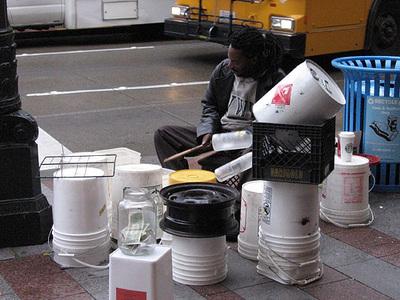
How to assemble a drum kit out of buckets.
Bucket Drumming: A Creative Drum Kit Alternative
Bucket drumming can be an affordable and engaging option for budding drummers. Discover the adaptability of drumming on buckets, creating a portable kit with limitless potential.
Crafting the Snare: Unique Sound from a Bucket
For an effective snare drum, use a 5-gallon plastic bucket. Fill it with 50 pennies, open-end up. Strike the rim for a snare-like sound, as the pennies create a bouncing, rattling effect.
Tonal Variety with Toms: DIY Replicas
Essential for solos, toms are easy to replicate. Choose buckets of different sizes (5-gallon, 3-gallon, etc.), open-end down. Strike the center of the bottom like a real tom. Experiment for diverse tones.
Bass Drum Emulation: Make Your Own
Create a bass drum by using a large Rubbermaid bucket. Place it on its side, open-end away from the kit. Set a kick pedal in front for tapping with your foot, replicating bass drum beats.
Hi-Hat Mastery: A Foot-Controlled Cymbal
For hi-hats, use a small cymbal. Position it under your left foot. Control the sound by lifting your foot for open hi-hat or lowering it for closed hi-hat effects.
Cymbals and Creative Flair: Endless Possibilities
While real cymbals are recommended, get creative. Experiment with a small metal coffee can as a cowbell or glass jars for unique chime tones. The potential for inventive sounds is boundless.
Effective Tips and Hints: Enhance Your Skills
Rubber buckets yield softer, bass-rich tones; plastic offers sharper attack and treble. Smaller buckets create higher pitches. Stacking raises smaller buckets. A step stool as a throne eases stress on your back.
Personalized Arrangement: Optimal Setups
Customize your setup based on personal preference. Experiment with different arrangements to find what suits your style best. Unlock the rhythm of bucket drumming by crafting your drum kit out of buckets. Embrace creativity, personalization, and rhythm in this unique musical journey. That is how to assemble a drum kit out of buckets.